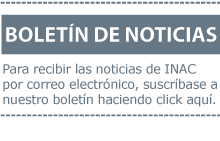The President of the National Meat Institute, Alfredo Fratti, presented in a press conference the estimates for the closure of the year 2010 as regards slaughter, exports and consumption in the domestic market.
The President stated that this year has been very good and 2011 will come with higher prices. To close the year, the best piece of news is the announcement of the visit to Uruguay of the Korean President in early January, Fratti said, since work is being done in order to obtain authorization to export fresh beef to said country.
By the end of this year the beef slaughter is expected to be of about two million two hundred thousand cattle head. This figure is similar to that of 2007 and 2008, though a little below the slaughter of last year. There has been certain stability as to this register in the past four years.
In the case of sheep, industrial slaughter will be close to one million two hundred and fifty thousand head, the lowest register since 2005.
Exports.
Exports of the total meat sector (meat, offal and byproducts) will exceed 1,420 million dollars. This is the highest income in the history of exports, except for 2008.
Beef exports will surpass 1,140 million dollars in 2010. This is the highest income in the history of exports, except for 2008.
The volume of beef exports will reach close to 375 thousand tons cw. This volume is very similar to that of 2008 and slightly below the past year (which was the export expectation for this year).
The average income for beef exports in 2010 will be close to 3,100 USD/ton cw. This represents a significant increase (25%) in comparison with last year, almost reaching the record values of 2008.
The average monthly income for beef exports began near 2,500 USD/ton cw in January and is reaching close to 3,800 USD/ton cw in December.
The volume of sheep meat exports will reach close to 20 thousand tons cw. This is the lowest figure of recent years.
The average income for sheep meat exports in 2010 will be close to 3,900 USD/ton cw. This is the highest value in the history of sheep meat exports, showing a steep increase (50%) compared to the previous year.
The average monthly income for sheep meat exports began near 2,900 USD/ton cw in January and is reaching close to 5,000 USD/ton cw in December.
Destinations:
The Russian Federation continues to be the leading destination of Uruguayan beef exports in terms of volume.
The European Union has showed a most stable behavior in recent years, demanding almost 20%. The rest is greatly diversified and divided among more than 100 markets.
The European Union outstands in regard with its value share, since the kind of cuts that are placed in this market (mainly rump & loin).
Domestic market According to the figures available to date it seems that beef consumption will probably reach 61 Kg/person/year, 28.2% higher than consumption in 2005. Consumption of alternative meats such as poultry and pig meat is also expected to increase, reaching 20 Kg/person/year and 9 Kg/person/year respectively. Meanwhile, consumption of sheep meat is expected to fall to 4 Kg/person/year, similar to the figure of 2005 when it had begun rising. With these numbers, consumption would be about 94 kg/person/year, a 23 % increase in the total of 2005. Historically, beef and poultry have had the biggest share. As regards trading of beef in Montevideo, consumption of boneless cuts will increase by 8.3%, with a slight fall in consumption of bone-in cuts. Also in this Department, according to the results of research on consumption preferences, the behavior of consumers from Montevideo has changed in 2010 compared to that of 2005. In regard with trading of pig meat, consumption of this kind of meat in natural state rose. As to consumption of poultry, demand for this meat showed a sustained growth going from 15.6 Kg/person/year in 2005 to near 20 Kg/person/year by the end of this year. In relation to the evolution of beef prices to the public, the index has shown a drop in the past two months, with a more significant fall in December 2010 (-3.1 December 2010 against October of the same year). This drop is mainly explained by the decrease in the price of forequarter cuts, a greater fall than that occurred in the price of hindquarter cuts. The cut showing the greater drop in prices to the public in the period October 2010-December 2010 was the rib plate (approximately -9.0%). As to poultry prices, they also fell in November compared to the previous month. Source: Information and Economic Analysis Directorate. Domestic Market Control Directorate.






